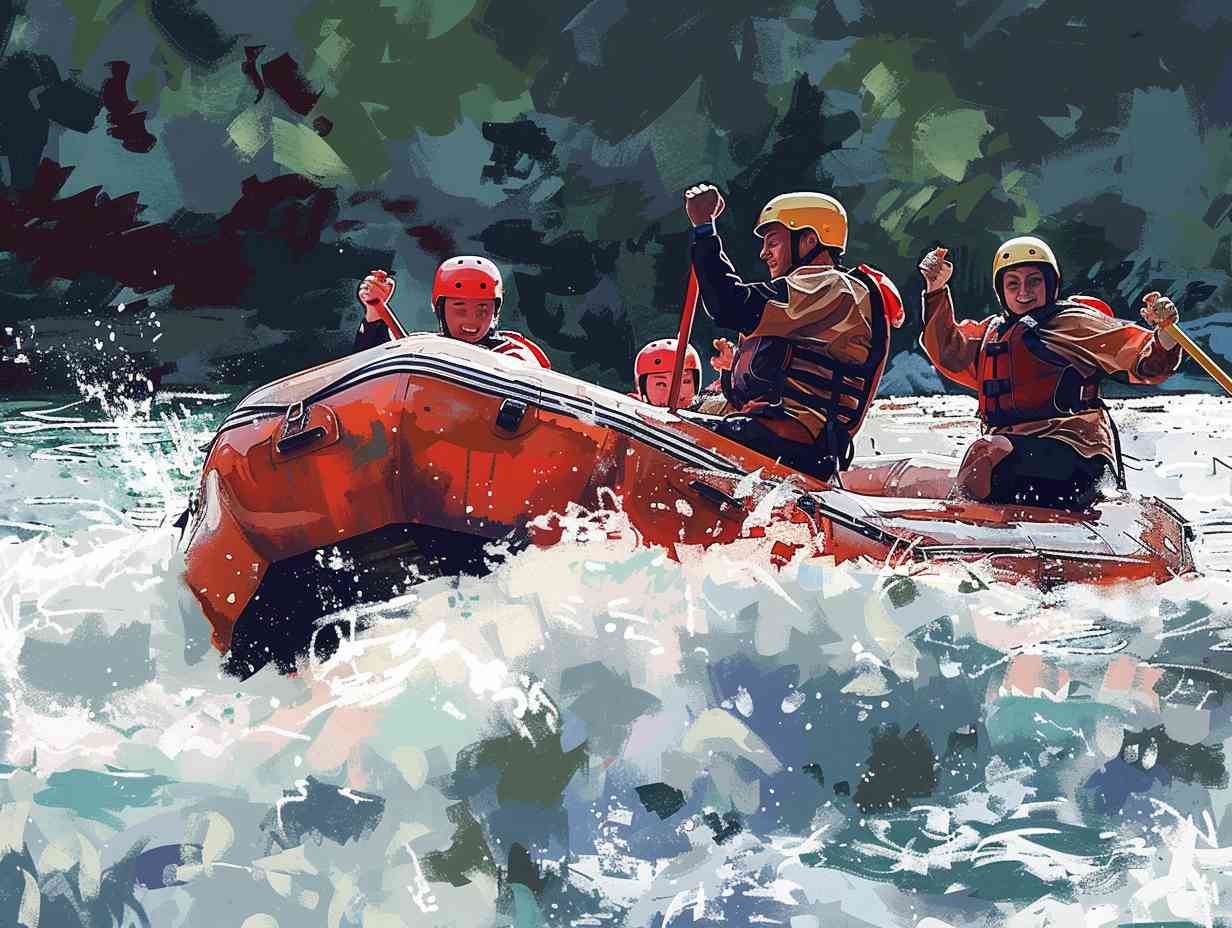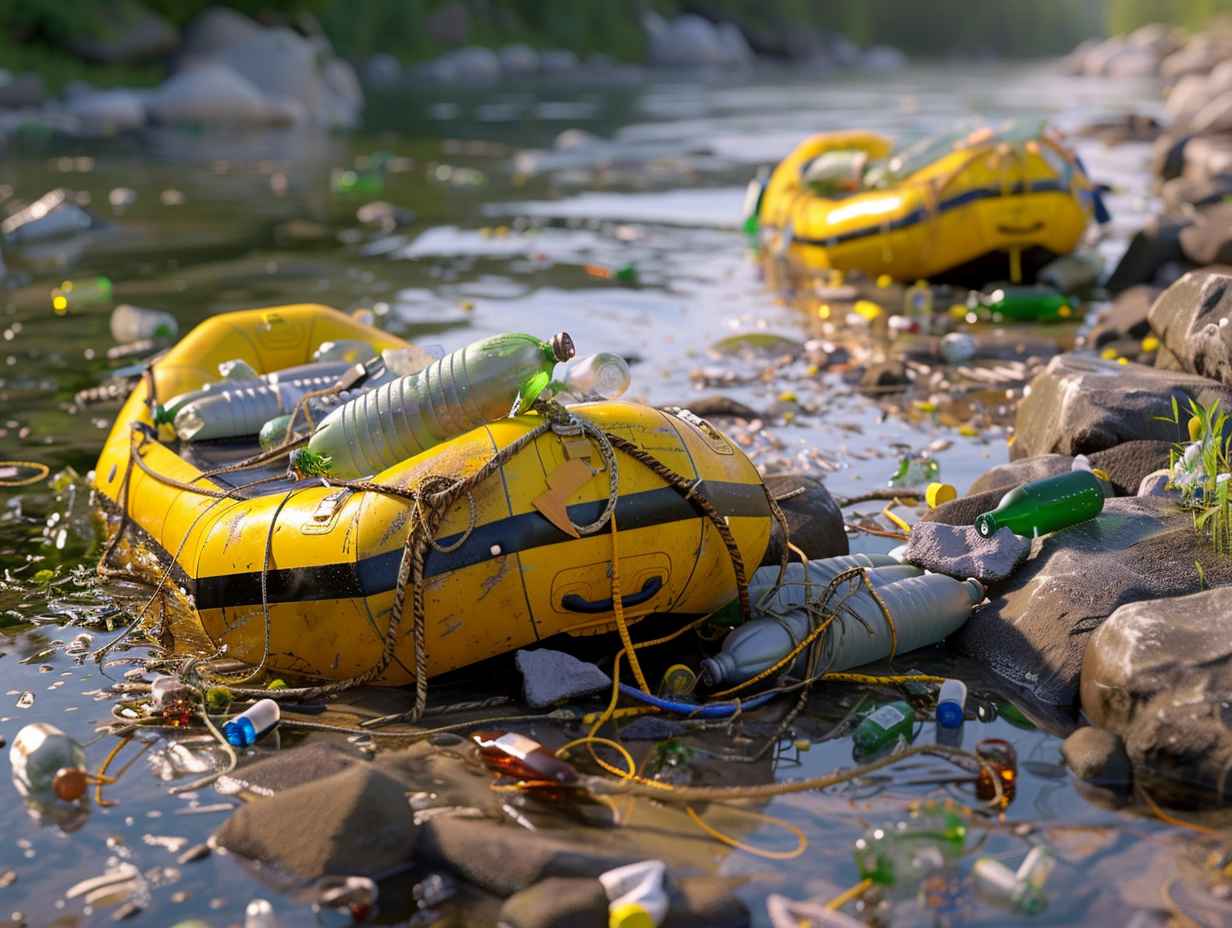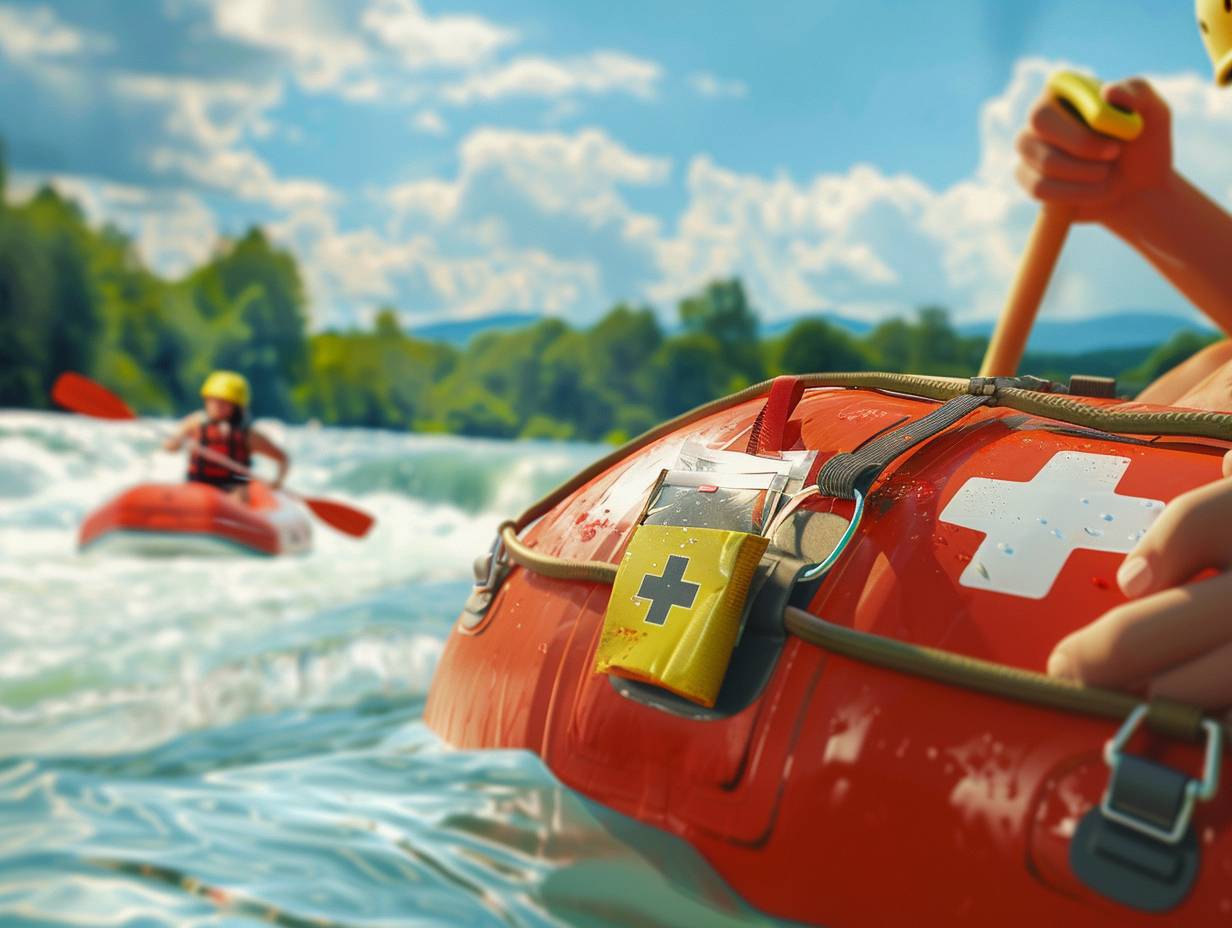
Essential Rafting Equipment
Table Of Contents
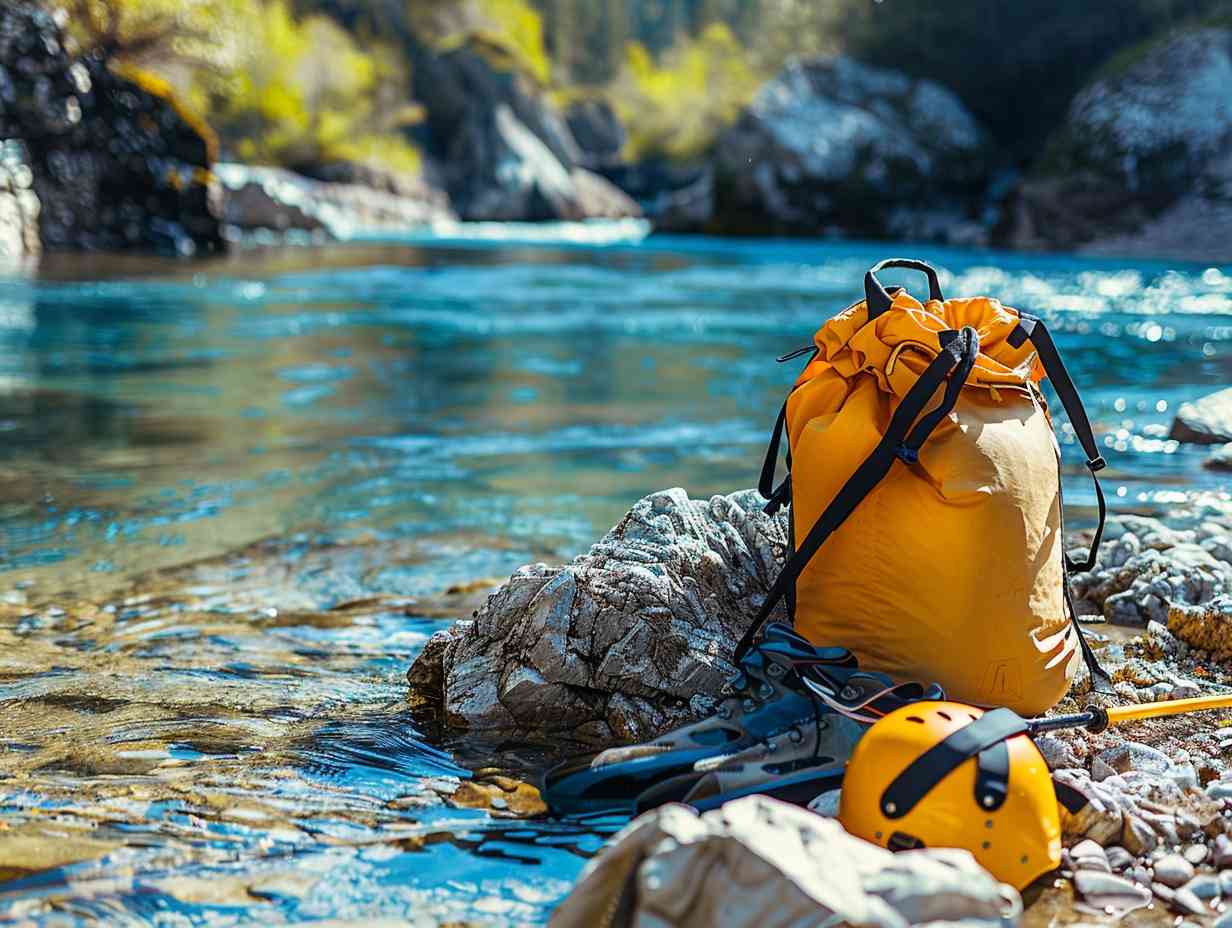
When it comes to sailing the unpredictable waters, having the right gear can mean the difference between smooth sailing and hitting rough patches.
Imagine the rush of the rapids, the thrill of the adventure, and the importance of being prepared for whatever the river throws your way.
As you begin to plan your next rafting excursion, ensuring you have the essential equipment is not just a suggestion, but a necessity.
Let’s explore the key items that should be on your checklist before you set off on your next river journey.
Key Takeaways
- Wear properly fitted helmets meeting safety standards.
- Choose life jackets with appropriate buoyancy and snug fit.
- Select paddles based on length, material, and blade shape.
- Use waterproof dry bags and suitable footwear for protection and convenience.
Helmets
When rafting, make sure you wear a properly fitted helmet to protect your head from potential impacts. A well-fitted helmet is vital for your safety on the water. It should sit snugly on your head without being too tight or too loose.
A helmet that’s too loose may fall off during rough rapids, while one that’s too tight can cause discomfort or even headaches. Look for helmets specifically designed for water sports, as they’re lightweight, durable, and have proper ventilation to keep you cool.
Prioritize safety over style when choosing a helmet, ensuring it meets safety standards and provides adequate protection for your head in case of any unexpected collisions.
Life Jackets

Make sure you have a properly fitted life jacket before starting on any rafting adventure. It’s essential for your safety on the water. Here are some key points to think about when it comes to life jackets:
- Check the buoyancy level of the life jacket to make sure it’s suitable for rafting.
- Make sure the life jacket is snug and fits comfortably without restricting your movements.
- Verify that the life jacket is in good condition with no tears or damages.
- Ensure that the life jacket is approved by relevant safety standards.
- Remember that wearing a life jacket at all times while rafting is non-negotiable for your safety.
Paddles
Guarantee your rafting experience is smooth and efficient by selecting the right paddles for your adventure. Paddles are essential tools that help you navigate the waters effectively, so choosing the correct ones is important.
Consider the length of the paddle, as longer paddles provide more power but might be harder to control, while shorter paddles offer better maneuverability. The material of the paddle is also important; fiberglass paddles are lightweight and durable, ideal for longer trips, while aluminum paddles are more affordable and suitable for beginners.
Make sure the paddle blade shape suits your paddling style - wider blades offer more power, while narrower blades are better for quick movements. Choose wisely to enhance your rafting experience.
Dry Bags
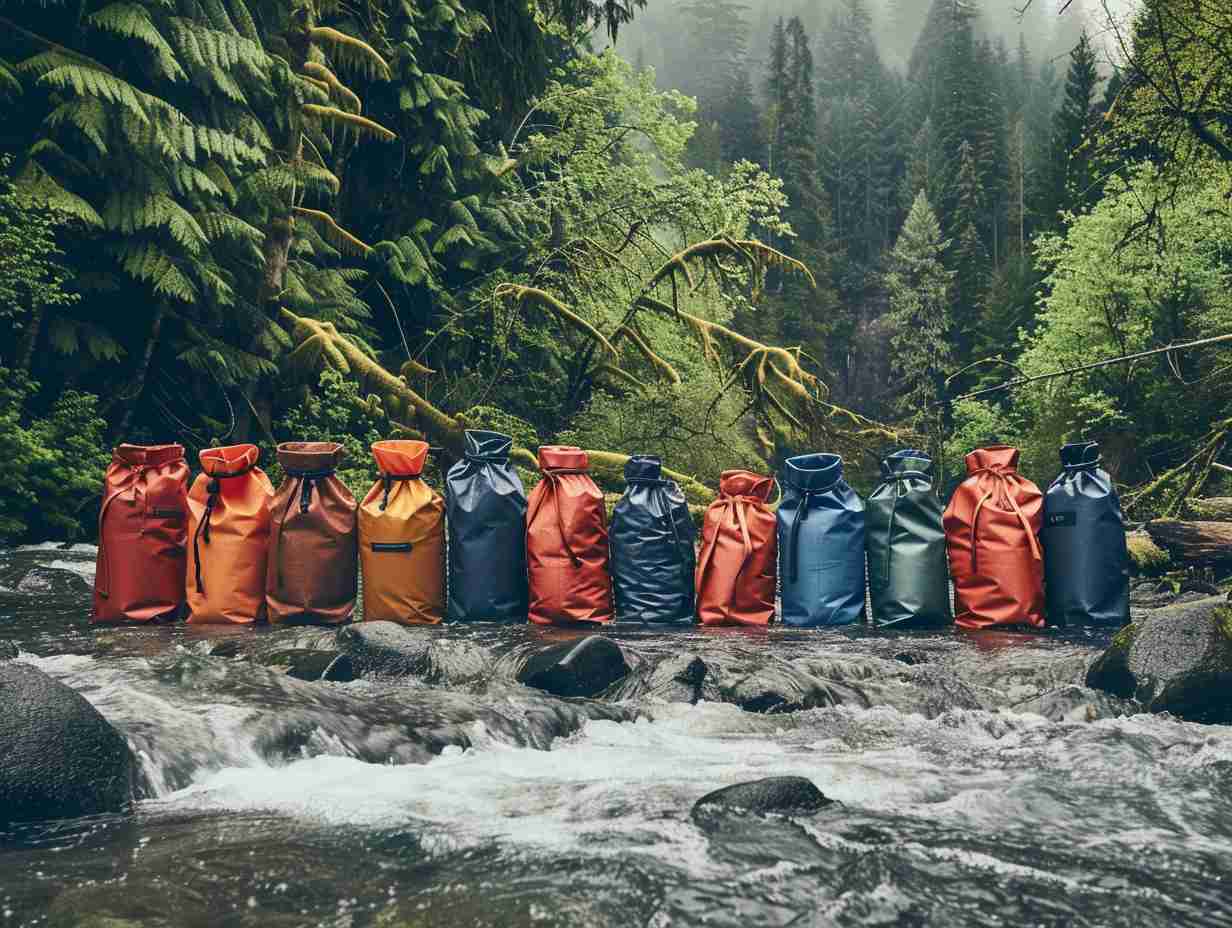
Select the right dry bags to keep your belongings safe and dry during your rafting adventures. When choosing dry bags, consider the size and material to assure they meet your needs. Here are some key points to keep in mind:
- Size Matters: Opt for different sizes to accommodate various items.
- Material Quality: Look for durable and waterproof materials like PVC or nylon.
- Closure Type: Consider roll-top closures for better waterproofing.
- Straps and Handles: Choose bags with sturdy straps for easy carrying.
- Visibility: Pick bags with transparent windows to quickly locate your items.
Footwear
When preparing for your rafting adventure, ensuring you have the right footwear is essential for a comfortable and safe experience on the water. Proper footwear for rafting should be sturdy, quick-drying, and provide good traction to prevent slipping on wet surfaces. Water shoes or sandals designed specifically for water activities are ideal choices. Avoid wearing flip-flops or shoes that can easily come off in the water. Look for footwear with secure straps or laces to keep them in place during your adventure. Investing in quality water footwear will not only enhance your rafting experience but also protect your feet from sharp rocks or debris in the river.
| Top Rafting Footwear Options | Key Features | Price Range |
|---|---|---|
| Water Shoes | Sturdy, Quick-drying | $30 - $80 |
| Neoprene Socks | Provide Insulation | $15 - $30 |
| Sport Sandals | Good Traction | $40 - $100 |
Frequently Asked Questions
What Are Some Common Safety Tips for Beginners Going on a Rafting Trip?
When going on a rafting trip as a beginner, remember to listen to your guide, wear a properly fitted life jacket, stay hydrated, and follow safety instructions. Always keep a positive attitude and be prepared for a thrilling adventure.
Is There a Minimum Age Requirement for Children to Participate in Rafting Excursions?
Yes, there is usually a minimum age requirement for children to participate in rafting excursions. Check with the specific rafting company as rules may vary. Safety is a top priority for all participants.
What Is the Best Type of Rafting Trip for Beginners to Start With?
For beginners, the best rafting trip to tackle first is a scenic float. This gentle journey allows you to ease into the excitement of rafting while enjoying the picturesque surroundings. Dip your oar and explore in!
Are There Any Specific Medical Conditions That Would Prevent Someone From Participating in Rafting?
If you have specific medical conditions like uncontrolled high blood pressure, recent surgeries, or severe heart conditions, they may prevent you from safely participating in rafting. Always consult with a healthcare provider before engaging in such activities.
Can Personal Belongings Such as Cameras or Phones Be Brought on a Rafting Trip, and if So, How Should They Be Protected From Water Damage?
You can bring cameras or phones on a rafting trip, but protect them in waterproof cases or dry bags. Nearly 11 million smartphones are damaged by water yearly. Safeguard your belongings to capture memories without risking damage.
Conclusion
So there you have it, all the essential rafting equipment you need to stay safe and have a great time on the water.
Remember, when it comes to rafting, it’s better to be safe than sorry.
So make sure you have all your gear in place before hitting the rapids.
After all, it’s always better to have it and not need it, than to need it and not have it!
More information about
Affiliate information declaration: We may earn revenue from the products referred on this page and participate in affiliate programs.
